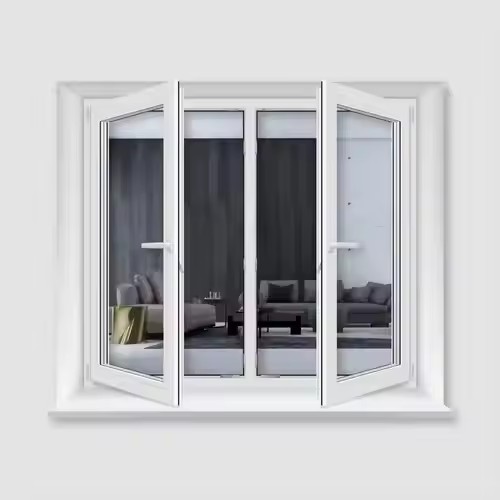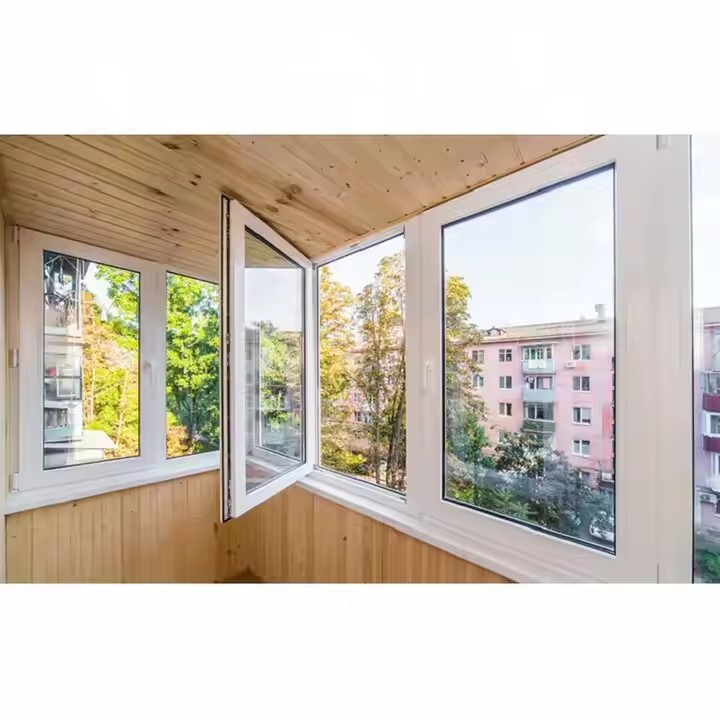Aluminium Alloy Windows and Doors:
Aluminium alloy windows and doors hold a significant market share in Australia and are one of the most popular material choices. They offer numerous advantages, starting with excellent corrosion resistance. Aluminium alloy is not easily corroded by oxidation and can adapt well to Australia’s diverse climate conditions. Whether in the high-humidity coastal areas or inland regions with large temperature variations, it maintains stable performance.
Additionally, aluminium alloy is lightweight, making installation and use easier, yet it has high strength to meet the requirements of different building types. Thermal break aluminium windows and doors, in particular, are a top choice for modern architecture due to their outstanding insulation performance. The thermal break structure effectively blocks temperature differences between indoors and outdoors, and when paired with Low-E or tinted glass, it further reduces solar heat gain indoors, delivering significant energy savings.
Aesthetically, aluminium alloy windows and doors are stylish and simple, with clean designs that can be customised through powder coating to offer a wide range of colours and styles to suit various architectural designs. They also have low maintenance requirements, do not need frequent servicing, and have a long lifespan, saving users both time and costs.
Solid Wood Windows and Doors:
Solid wood windows and doors also have a certain market share in Australia, mainly used in high-end homes and villas. On the one hand, they offer excellent thermal insulation, as wood is a natural insulator with low thermal conductivity, effectively reducing indoor heat loss and maintaining stable indoor temperatures.

On the other hand, their greatest advantages lie in aesthetics and eco-friendliness, adding warmth and a natural atmosphere to interiors while enhancing the quality and character of a home. High-quality hardwoods such as eucalyptus or cedar not only look beautiful but can also retain their natural grain or be finished with a clear varnish to achieve a rustic style.
Moreover, solid wood is a renewable resource with low carbon emissions, meeting modern consumers’ demand for eco-friendly materials. However, solid wood windows and doors are relatively expensive and require regular maintenance to prevent warping or decay, which limits their widespread use.
PVC Windows and Doors:
PVC windows and doors, with their mid-range pricing and good insulation performance, are well-suited to Australia’s mid-market housing segment. The low thermal conductivity of the plastic frames, combined with excellent airtightness and watertightness, effectively prevents hot and humid air from entering, ensuring a comfortable indoor environment. PVC windows and doors also offer good sound insulation, creating a quieter living space for residents.
Glass:
Although glass is not a frame material, it plays a crucial role in Australian windows and doors. Double-glazed glass is a standard feature, providing good energy efficiency and sound insulation. Tinted or coated glass (such as light grey or bronze) helps reduce glare and can complement the building façade. Frosted glass offers privacy, while fluted “reeded” glass adds style to luxury modern homes.
Glass performance depends on the specific type used, and since China produces high-quality glass at competitive prices, it is often a cost-effective choice.

In Summary:
Australians’ preferences for window and door materials are influenced by local climate conditions, building requirements, and consumer expectations for aesthetics and functionality. Aluminium alloy windows and doors dominate the market due to their all-round advantages. Solid wood occupies the high-end segment with its unique texture and appeal. PVC products win over the mid-range market with their value-for-money performance, while the right glass configuration further enhances the functionality and visual appeal of windows and doors.
Since aesthetics vary across countries and cultures, material selection and design should always be tailored to the specific market context.

